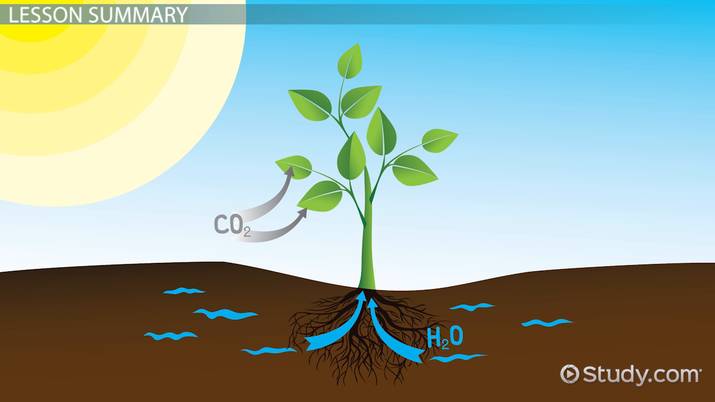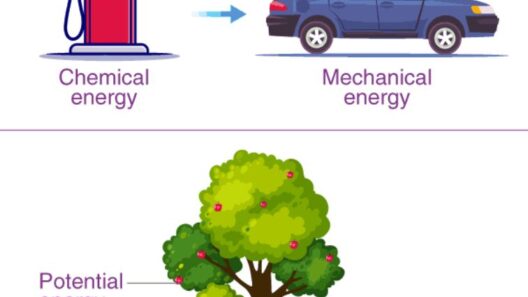Photosynthesis is one of nature’s most remarkable processes, a phenomenon that not only sustains life on Earth but also exemplifies the conservation of energy and matter. This intricate procedure converts light energy into chemical energy, ultimately fostering the growth of plants and serving as the foundational base of the food chain. Understanding how matter and energy are conserved in photosynthesis invites a deeper appreciation for the ecosystems we inhabit and the delicate interconnections that sustain them.
At its core, photosynthesis occurs within the chloroplasts of plant cells, primarily in the leaves. It involves the interplay of sunlight, carbon dioxide (CO2), and water (H2O) to produce glucose (C6H12O6) and oxygen (O2). The overall reaction can be summarized by the equation:
6 CO2 + 6 H2O + light energy → C6H12O6 + 6 O2
This equation illuminates the conservation of matter; it shows that the atoms present in the reactants (carbon, hydrogen, and oxygen) are rearranged but not created or destroyed. Through a series of complex biochemical reactions, these atoms are incorporated into glucose and released as oxygen, a testament to the principle of mass conservation.
The process of photosynthesis is divided into two primary stages: the light-dependent reactions and the light-independent reactions (also known as the Calvin cycle). The light-dependent reactions, occurring in the thylakoid membranes of the chloroplasts, depend on sunlight. Here, photonic energy is harnessed by chlorophyll pigments, which excite electrons and initiate a chain of electron transport. This process leads to the splitting of water molecules, producing oxygen as a byproduct and facilitating the synthesis of ATP (adenosine triphosphate) and NADPH (nicotinamide adenine dinucleotide phosphate), essential energy and electron carriers.
Energy conservation occurs during these light-dependent reactions in multiple ways. The captured sunlight energizes electrons, enabling them to move through the electron transport chain. As they descend through the chain, their energy is gradually released and used to pump protons across the thylakoid membrane, creating a proton gradient. This electrochemical gradient is vital for ATP synthesis, a process known as chemiosmosis. The intricate choreography of energy transfer ensures that not a single photon goes to waste, highlighting the efficiency with which nature conserves energy.
Once the light-dependent reactions yield ATP and NADPH, these molecules fuel the light-independent reactions, or the Calvin cycle. This series of reactions occurs in the stroma of the chloroplast and does not directly require light. Instead, it utilizes the energy supplied by ATP and the reducing power of NADPH to convert carbon dioxide into organic compounds, primarily glucose. The fixation of CO2 occurs through a series of catalytic steps carried out by the enzyme RuBisCO. This process encapsulates the conservation of matter, demonstrating how inorganic carbon is ultimately transformed into organic biomass.
One might wonder how this conversion not only fuels plant growth but also influences atmospheric composition. The glucose produced can be utilized by the plant for energy or stored as starch for later use. Furthermore, the oxygen released during photosynthesis plays a pivotal role in maintaining the balance of gases within the Earth’s atmosphere, making plants essential players in the carbon and oxygen cycles. The interplay of these cycles exemplifies a holistic ecological framework in which photosynthesis operates, showcasing an elegant example of how life sustains itself while regulating the planet’s climate.
Interestingly, photosynthesis is not solely limited to plants. Algae and certain bacteria, such as cyanobacteria, also perform photosynthesis, demonstrating the versatility of this process. As these organisms contribute to the global carbon cycle, they underscore the importance of photosynthesis in various ecosystems, from the depths of the oceans to the tallest forests. Each organism utilizes localized conditions—light availability, water access, and nutrient levels—to optimize photosynthetic efficiency, revealing the adaptability and evolutionary ingenuity of life forms that rely on this process.
The implications of photosynthesis extend beyond biological systems; they encompass atmospheric science, climate change, and sustainability. As global temperatures rise and ecosystems face unprecedented challenges, understanding photosynthesis offers insights into carbon sequestration. Forests, for example, act as carbon sinks, absorbing significant amounts of CO2 through photosynthesis. Protecting and restoring these ecosystems is vital for combatting climate change, thus emphasizing the ethical responsibility we hold towards the environment.
Moreover, as scientists delve deeper into the mechanisms of photosynthesis, they uncover opportunities for innovation. Research into artificial photosynthesis aims to mimic natural processes to generate clean energy and reduce greenhouse gas emissions. By capturing sunlight and converting it into hydrocarbon fuels, these advancements promise a paradigm shift in renewable energy technologies, aligning ecological sustainability with energy demands.
In conclusion, the conservation of matter and energy in photosynthesis unveils an intricate tapestry of biological, atmospheric, and ecological interactions. By elucidating this profound process, we foster curiosity and an appreciation for the natural world. As we face contemporary environmental challenges, understanding the mechanisms of photosynthesis not only deepens our respect for life’s processes but also inspires us to advocate for a more sustainable future. The relentless pursuit of knowledge in this field offers hope, igniting a conversation about stewardship and the intricate balance required to sustain life on our precious planet.







